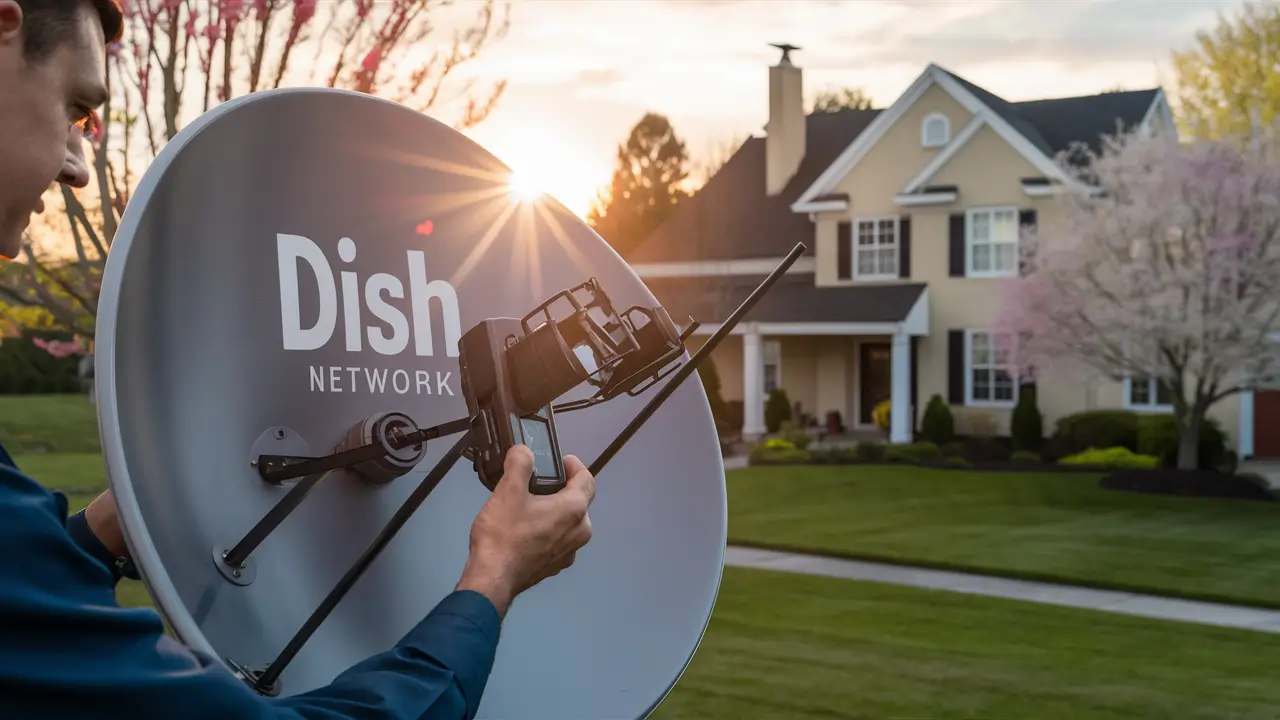
Having problems with Dish Network satellite signals? Most of the time, it is an easy process to align your satellite dish on your own and you do not need to seek the services of a technician. Of course, you can always pay for a Dish technician to set your satellite up, but why spend the extra money and time? Here is a step-by-step guide on how to adjust your Dish Network satellite dish:
What You'll Need
Before you get started, make sure you have the necessary equipment:
- Satellite Dish – The actual dish that physically receives the signal being transmitted by the satellite.
- Coaxial Cable – The heavy cable that connects the dish to your home receiver.
- Satellite Meter/Signal Strength Meter – This is a special gadget you can buy to check the signal strength and adjust the dish accordingly. A standard multimeter can also work.
- Wrenches – To use in loosening or tightening bolts to allow adjustment of position.
Preparation
Before moving or adjusting your dish take a moment to:
- Record current position and elevation/skew/azimuth measurements. These should be written down in case there is a need to revert to the previous positioning.
- Check the southern sky visibility - Try to observe if there are some obstacles such as trees or houses in the satellite’s signal direction.
Four Steps to Adjust Your Dish
Follow these four key steps to tweak your Dish Network positioning:
1. Loosen Mounting Bolts
First, begin with a process of slightly easing the mounting bracket bolts that hold your Dish satellite dish on the roof or pole mount. These make it easier for you to flex while you do not sever your connection altogether.
2. Adjust Elevation Angle
The tilt angle is the extent to which your dish is raised or lowered to face upwards towards the sky. Point the antenna towards the south and either employ a satellite meter or the signal strength displayed on your TV screen and then gradually turn the elevation up and down by a few degrees at a time. Turn the plate a little clockwise and counterclockwise and gradually you will find the right angle with the best signal intensity.
3. Adjust Azimuth
The azimuth determines whether your dish is pointed to the left or right. Rotate the dish clockwise or anticlockwise observing the signal meter and will arrive at the correct azimuth. Ensure that you do not crank past 180 degrees.
4. Tweak Skew
Skew adjustment rotates the dish slightly, almost in a parallel plane to further align it. Adjust as desired, especially in smaller increments, and verify the signal strength to get the best picture and reception possible. It is wise not to twist the skew too far left or right.
Re-Tighten Mounting Bolts
When your readings and test channels demonstrate the optimum signal strength without any form of loss, then proceed to tighten the pole mount bolts while ensuring that their position is maintained at the highest level you have.
How Do You Know When You Need Professional Adjustment
If you are still unable to achieve stable peak reception even after fine-tuning the elevation, azimuth, and skew settings, then perhaps you may need to contact Dish support for a technician to visit your home. Some scenarios where professional assistance may be required:
- You have adjusted all the possible settings and now low signal warnings are appearing.
- Trees or buildings are in the way now and dishes just have no hope of getting a signal.
- Preparatory works include an initial professional installation in case you plan to mount it on the roof.
- This may be internal cabling problems at Dish that may affect your exclusive dish alignment.
- Your dish is in fact, far too off-axis to self-correct where you are.
When Not to Touch Your Dish Position
One final tip to keep optimal reception humming: do not be tempted to routinely tweak your satellite reception without proper cause! After having reached and twisted the elevation, azimuth, and skew for the best signal, it should stay in place without budging and provide a good Dish view. Once the team has a winning strategy in place, do not alter it! If you later realize you had reception problems, call for Dish assistance since they have equipment to diagnose the problems.
Fine-tuning of Dish equipment may seem like complex manipulation but do not rush and take precautions, plus if one follows signal strength -optimizing alignment, it is one of the easiest handyman jobs that one can avoid contracting a technician for. But if unable to complete it on your own, calling their technicians is of course, always an option as well.
Ready to upgrade your TV experience? Call us now at (877) 471-4808 to find the perfect Dish Network plan for you! Don’t miss out on great entertainment—our team is here to help you choose the best package and get you started today.





